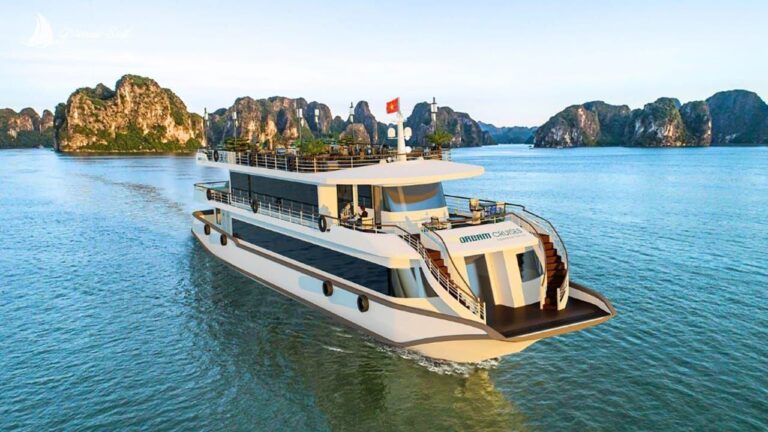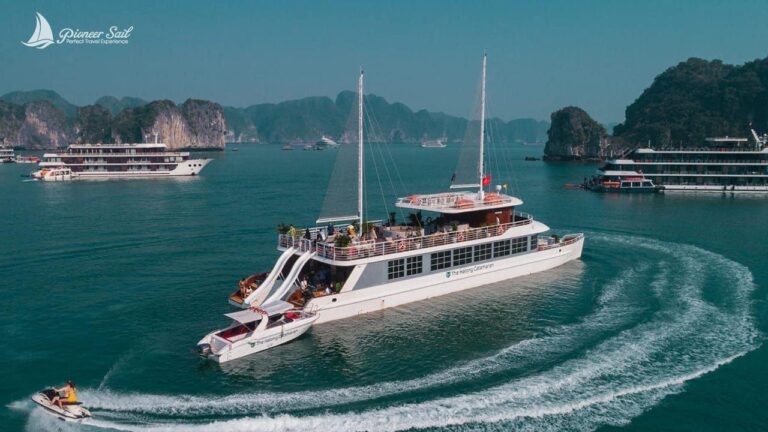The Hoa Lu and Thang Long Relocation marks one of the most critical events in Vietnam’s history, shaping not only its political future but also its cultural identity. This bold move by Emperor Ly Cong Uan in 1010 AD was not just a shift in geography but a statement of ambition, expanding Vietnam’s influence and leading to the rise of Thang Long—the city we know today as Hanoi. While Hoa Lu Ancient Capital laid the foundation of a united Vietnam, the relocation to Thang Long positioned the country for economic growth and defense.
At Pioneer Sail Travel, we understand that the history of these ancient capitals isn’t just a collection of dates—it’s a living narrative woven into the landscapes and temples still standing today. This guide will explore the significance of the relocation and offer insights on how to fully experience the legacy of both capitals during your visit.
The Rise of Hoa Lu as the First Imperial Capital of Vietnam
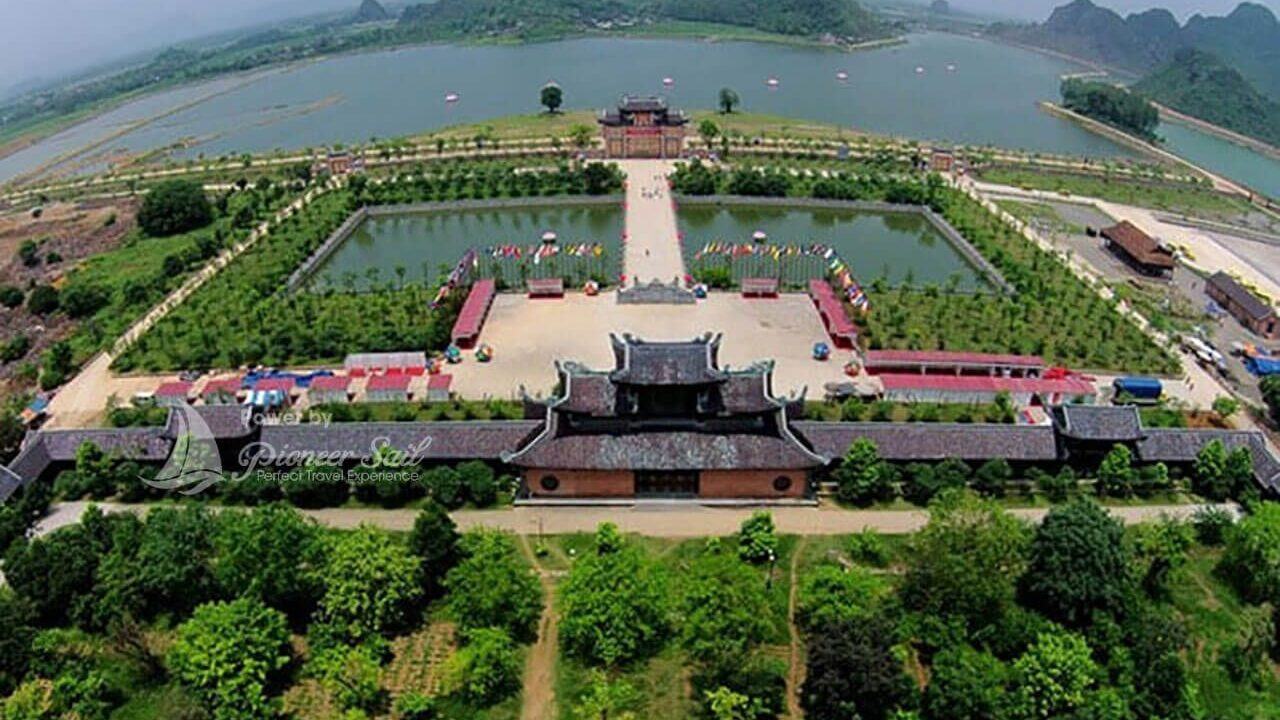
Introduce about Hoa Lu: Founded in 968 AD by Dinh Bo Linh (Emperor Dinh Tien Hoang), Hoa Lu was chosen as the first imperial capital of a unified Vietnam. Its strategic location in Ninh Binh Province, surrounded by limestone mountains and river systems, made it a natural fortress. During the reign of the Dinh and Early Le dynasties, the city became a political, military, and cultural hub, marking the beginning of centralized rule in Vietnam.
The Dinh dynasty (968–980) established its royal court in Hoa Lu, building temples, palaces, and fortifications. Emperor Le Hoan, the founder of the Early Le dynasty, expanded the city and strengthened its defenses against foreign threats, including Chinese invasions from the Song Dynasty. As both a political center and a cultural beacon, Hoa Lu fostered the creation of Vietnam’s earliest royal traditions.
Why Hoa Lu’s Location Was So Important
Hoa Lu’s geography was a key reason for its selection as the capital. Nestled between towering limestone peaks and interconnected rivers, the city was difficult for invaders to access, ensuring the safety of the imperial court. Historians often refer to Hoa Lu as a “natural citadel,” emphasizing how its terrain served as both a defense mechanism and a symbol of the emperor’s power.
| Natural Features | Impact on Hoa Lu |
| Limestone mountains | Provided protection from invasions |
| Interconnected rivers | Enabled trade routes and troop movement |
| Dense forests | Made large-scale attacks difficult |
This strategic advantage allowed the early emperors to govern without constant fear of attack, stabilizing the nation during its formative years. However, the landscape that once protected Hoa Lu would also limit its long-term growth, leading to the decision to relocate the capital.
The Cultural Legacy of Hoa Lu
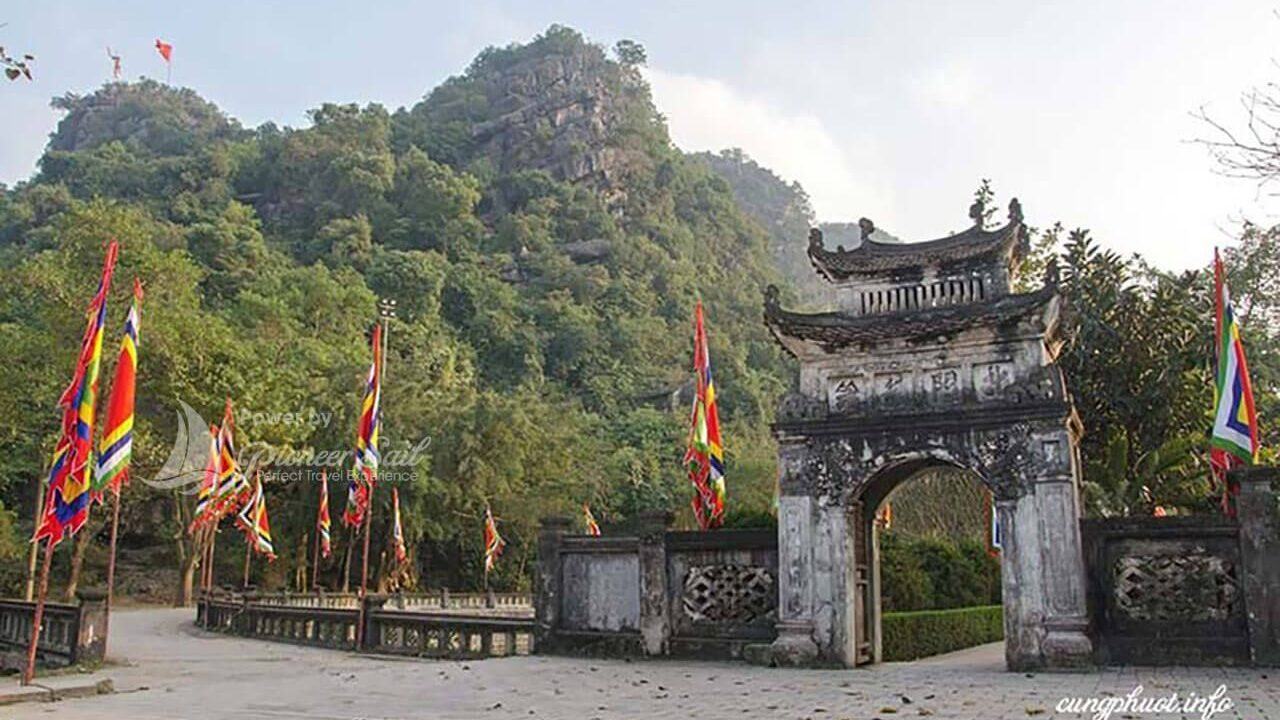
Although its political prominence ended with the relocation, Hoa Lu Ancient Capital remains an important cultural and spiritual site. The Dinh and Le Temples, built to honor the emperors, continue to draw pilgrims and tourists. Local festivals, such as the Hoa Lu Festival held annually in April, keep the traditions of the ancient capital alive. During these events, visitors can witness traditional processions, folk performances, and worship rituals that have been passed down through generations.
Traveler Tip: When visiting Hoa Lu, start your journey at the Dinh and Le Temples to immerse yourself in the spiritual heritage of the ancient capital. The temples provide a tranquil escape, with gardens, stone altars, and wooden statues commemorating the early rulers.
A visitor from France wrote on TripAdvisor: “Exploring the temples of Hoa Lu was a highlight of our trip to Ninh Binh. It felt like stepping back in time—the statues and carvings spoke of a deep connection between the past and the present.”
Today, Hoa Lu’s significance extends beyond its historical monuments. It serves as a gateway to Vietnam’s cultural heritage, offering visitors a glimpse into the origins of the nation’s identity. The traditions born in Hoa Lu still influence Vietnamese culture, from temple architecture to religious ceremonies.
- Tour from 38$: Hoa Lu – Trang An 1 Day Trip By Limousine ( Small group ) from Ha Noi / Ninh Binh / Ha Long or some where
- Tour from 39$: Hoa Lu – Trang An – Mua Cave 1 Day Trip By Limousine ( Small group ) from Ha Noi / Ninh Binh / Ha Long or some where
The Relocation from Hoa Lu to Thang Long – Political and Cultural Implications
The decision to relocate the capital from Hoa Lu to Thang Long was not made lightly. In 1010 AD, Emperor Ly Cong Uan issued the Proclamation Relocating Hoa Lu Capital to Thang Long, citing strategic, economic, and military reasons. Thang Long—later renamed Hanoi—offered better access to trade routes and geographical advantages, making it the ideal location for a growing empire.

Why Ly Cong Uan Left Hoa Lu for Thang Long
Ly Cong Uan left Hoa Lu for Thang Long because of the natural limitations of Hoa Lu. While the limestone mountains provided excellent defense, they also restricted the expansion of the city and limited access to trade routes. In contrast, Thang Long (then known as Dai La) was located along the Red River, giving the new capital easier access to both domestic and international trade.
The proclamation relocating Hoa Lu capital to Thang Long emphasized the need for a capital that could foster economic growth, political stability, and cultural development. This shift marked the beginning of a new era in Vietnamese history, with Thang Long becoming the epicenter of power for over a thousand years.
| Aspect | Hoa Lu | Thang Long (Hanoi) |
| Geographical Location | Enclosed by limestone peaks | Open plains along the Red River |
| Trade Opportunities | Limited | Access to major trade routes |
| City Expansion | Restricted | Room for growth and development |
The Impact of the Relocation on Hoa Lu
After the Hoa Lu to Thang Long relocation, the ancient capital slowly transitioned into a spiritual and cultural center. Although it no longer served as the political heart of the nation, Hoa Lu retained its importance as a site of royal tombs and religious worship. Today, visitors can explore the vestiges of the ancient capital, including sections of the original citadel walls, royal palaces, and tombs.
The relocation did not erase Hoa Lu’s legacy—instead, it redefined its role in the country’s history. Both Hoa Lu and Thang Long now stand as testaments to Vietnam’s evolution, offering travelers a chance to experience the roots of Vietnamese identity through architecture, traditions, and stories passed down through the centuries.
A UNESCO-backed restoration project completed in 2021 has further preserved key elements of the ancient capital, ensuring that future generations can continue to explore the site and appreciate its history.
Cultural Traditions Rooted in the Relocation – From Past to Present
The Hoa Lu and Thang Long relocation continues to influence Vietnam’s cultural landscape through festivals, temple rituals, and community practices. The traditions born during the early dynasties of Hoa Lu remain relevant, with annual events commemorating both the founding of Hoa Lu and the relocation to Thang Long.
Festivals Honoring Ly Cong Uan and the Thang Long Relocation
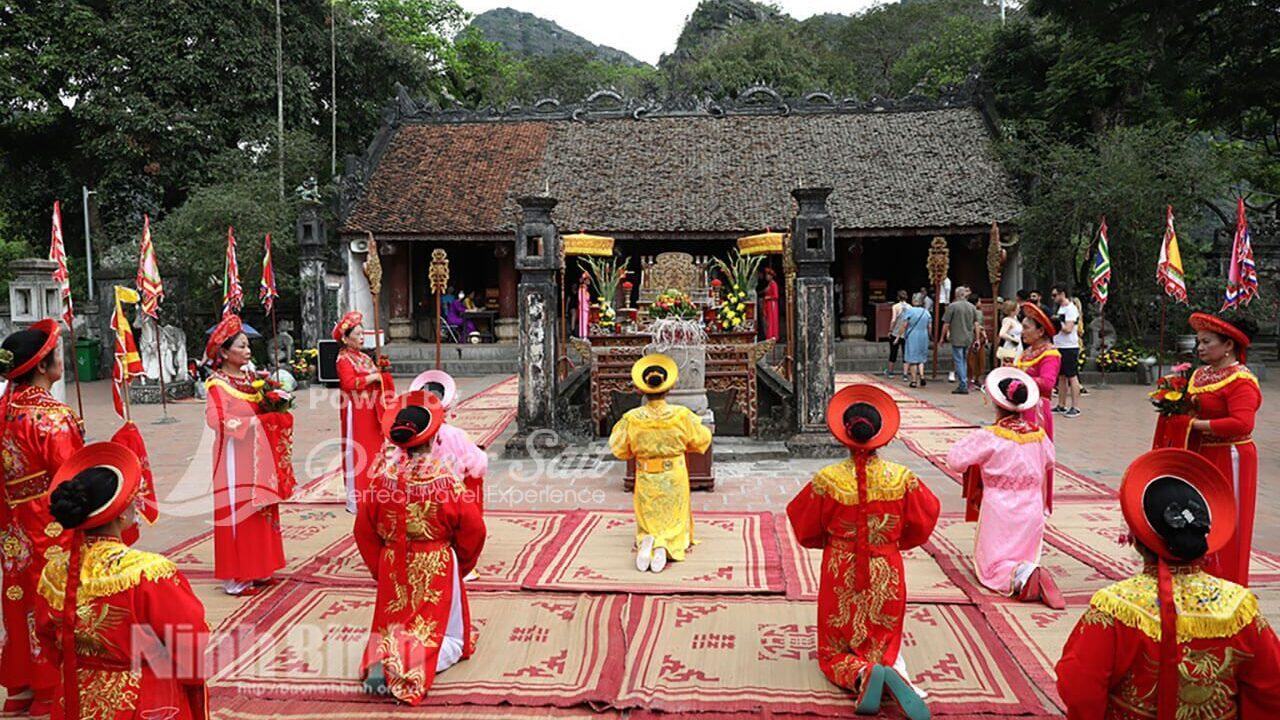
The Proclamation Relocating Hoa Lu Capital to Thang Long is celebrated through annual festivals, especially in Hanoi and Ninh Binh. These events honor Ly Cong Uan’s vision and the legacy he left behind. Hanoi’s Anniversary of the Capital in October is one of the largest celebrations, featuring parades, folk performances, and exhibitions about the history of Thang Long. Meanwhile, Hoa Lu Festival takes place every April at the Dinh and Le Temples, with processions, traditional games, and offerings to the emperors.
Traveler Tip: If you visit during these festivals, expect large crowds, but also a chance to experience the vibrant cultural life of Vietnam, complete with music, dance, and ancient rituals.
| Festival | Location | Highlights |
| Hoa Lu Festival | Ninh Binh | Processions, offerings, traditional games |
| Anniversary of Thang Long | Hanoi | Parades, exhibitions, cultural performances |
Exploring the Cultural Legacy of Both Capitals Today
Today, travelers can trace the history of Vietnam’s capital cities by visiting both Hoa Lu Ancient Capital and Hanoi. These two locations offer complementary insights into Vietnam’s political evolution and cultural heritage. The Dinh and Le Temples in Hoa Lu represent the origins of Vietnamese leadership, while the ancient citadel of Thang Long in Hanoi showcases the country’s growth and expansion over centuries.
Visitors to both sites will find shared architectural motifs, such as the use of lotus motifs, wooden carvings, and stone altars. The pagodas and temples that have been preserved in both locations reflect the continuity of Vietnam’s Buddhist and Confucian traditions.
Traveler Insight: “Walking through the Dinh Temple in Hoa Lu and the Thang Long Citadel in Hanoi gave us a sense of how these two capitals are connected—each offering a glimpse into different phases of Vietnam’s identity.”
How the Relocation Shaped Modern Hanoi and Its Identity
The relocation from Hoa Lu to Thang Long in 1010 AD paved the way for Hanoi to become the vibrant capital it is today. As Dai La transformed into Thang Long, it positioned itself as a center for trade, diplomacy, and education. Today, Hanoi’s bustling Old Quarter, ancient temples, and museums reflect a blend of modern growth and ancient traditions, rooted in the legacy of the relocation.
Architectural Influences from Hoa Lu to Hanoi
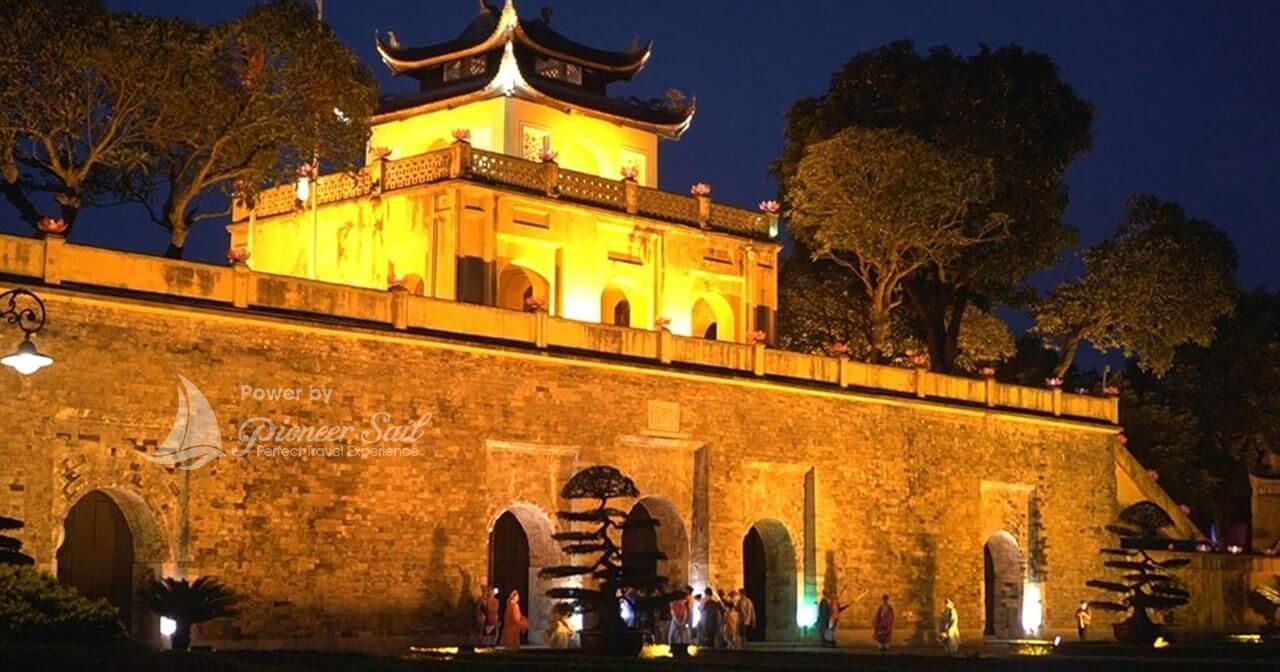
The architectural elements that began in Hoa Lu Royal Palace continued to evolve in Thang Long. Structures such as temple gates, pagoda courtyards, and royal halls in Hanoi reflect the same principles of harmony with nature and spiritual significance that were essential in Hoa Lu. For travelers, visiting both cities offers a deeper understanding of Vietnam’s architectural heritage and how it evolved over time.
Itinerary for Exploring Both Capitals
| Location | Recommended Time | Activity |
| Hoa Lu Ancient Capital | Half-day to full day | Explore Dinh and Le Temples, citadel walls, tombs |
| Thang Long Citadel (Hanoi) | Half-day to full day | Visit the citadel, Flag Tower, and ancient gates |
Pro Tip: Plan for at least two days to fully explore both Hoa Lu and Hanoi. A guided tour can help connect the historical narratives between the two capitals.
FAQs – Key Questions About the Hoa Lu and Thang Long Relocation
Why did Ly Cong Uan relocate the capital from Hoa Lu to Thang Long?
Ly Cong Uan sought a location with better trade routes and room for expansion, which Thang Long provided.
What are the key differences between Hoa Lu and Thang Long?
Hoa Lu was a natural fortress, ideal for defense, while Thang Long’s location along the Red River allowed for better trade and development.
Can I visit both Hoa Lu and Thang Long in one trip?
Yes, many travelers combine a day in Hoa Lu with a visit to Hanoi’s Thang Long Citadel, providing a full understanding of Vietnam’s history.
How much time should I allocate for each site?
Plan for at least half a day in Hoa Lu and a full day in Hanoi to explore the key attractions of each location.
Are there guided tours available?
Yes, Pioneer Sail Travel offers personalized tours that explore the connections between Hoa Lu and Thang Long with expert guides.
Conclusion – Why the Hoa Lu and Thang Long Relocation Matters Today
The relocation of the capital from Hoa Lu to Thang Long was not just a geographic shift—it was a defining moment in Vietnamese history. This decision laid the foundation for modern Hanoi, allowing Vietnam to grow politically, economically, and culturally. Exploring the remnants of both Hoa Lu Ancient Capital and the Thang Long Citadel offers travelers a chance to experience the continuity of Vietnam’s cultural identity across centuries.
At Pioneer Sail Travel, we invite you to explore both these iconic sites and experience Vietnam’s history in person. Whether you’re wandering through the temples of Hoa Lu or standing before the ancient gates of Thang Long, you’ll feel connected to a story that began over a thousand years ago.
Tags
hoa lu and thang long relocation, ly cong uan left hoa lu for thang long, hoa lu to thang long relocation, hoa lu to dai la, introduce about hoa lu, hoa lu ancient capital to explore, vietnam historical capitals

